Hyderabad: Born at Birstall Fieldhead, England, on 24 March in 1733, Joseph Priestley proved to be a very intelligent child from an early age. He learned mathematics, logic, metaphysics and natural philosophy. Priestley also learnt more than six different languages including Latin, Hebrew and Greek.
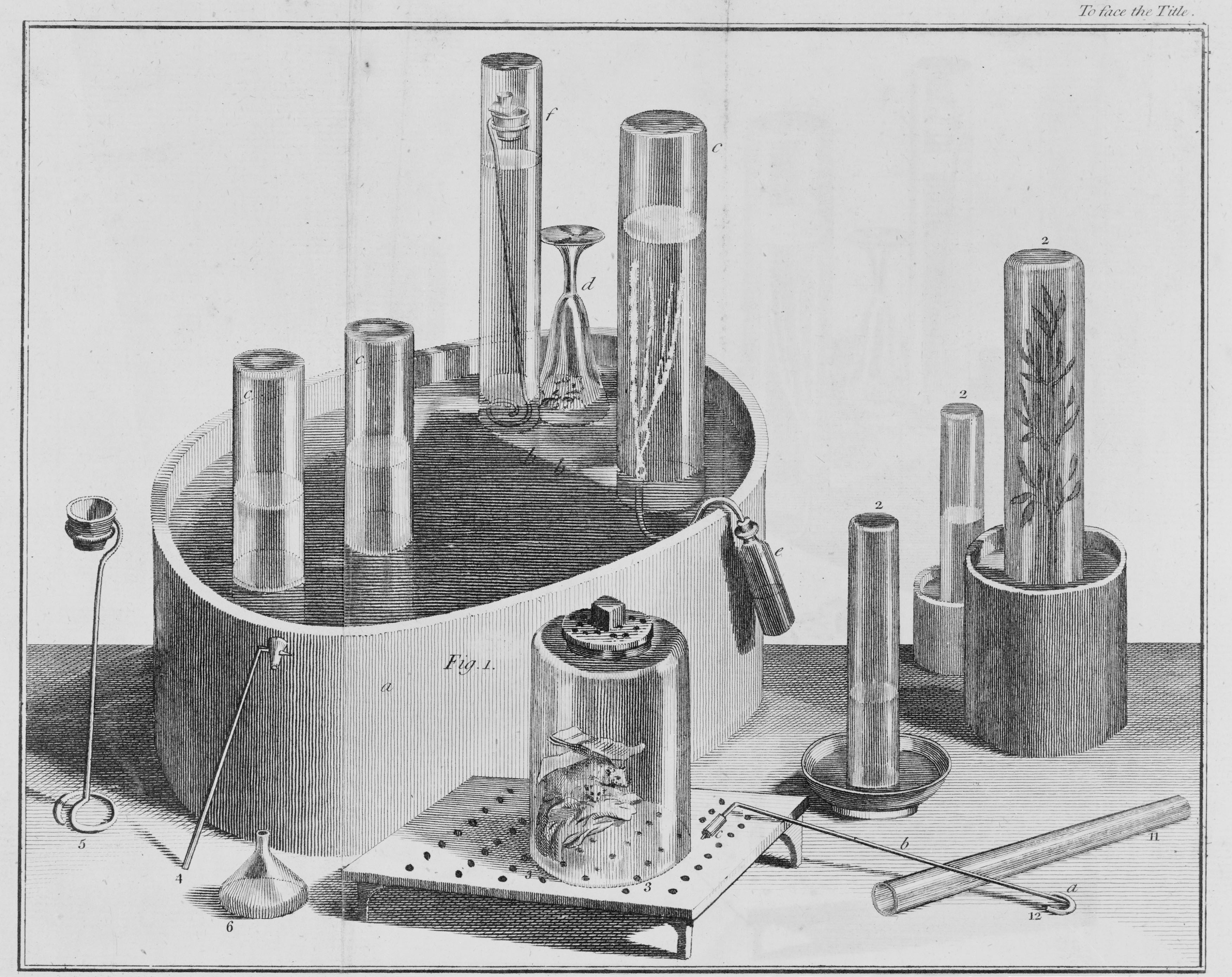
- He invented carbonated water and rubber/eraser. He identified a dozen key chemical compounds, and wrote an important early paper about electricity named ''The history and present state of electricity''.
- His unorthodox religious writings and his support for the American and French revolutions so enraged his countrymen that he was forced to flee England in 1794. He settled in Pennsylvania, where he continued his research until his death.
- Priestley wrote several theological, philosophical and political essays. He made the English press and government furious with his theories regarding “rational Christianity” and “Laissez-Faire Economics”.
- Priestley, along with his family, narrowly escaped hundreds of raging protesters who attacked their home in 1791
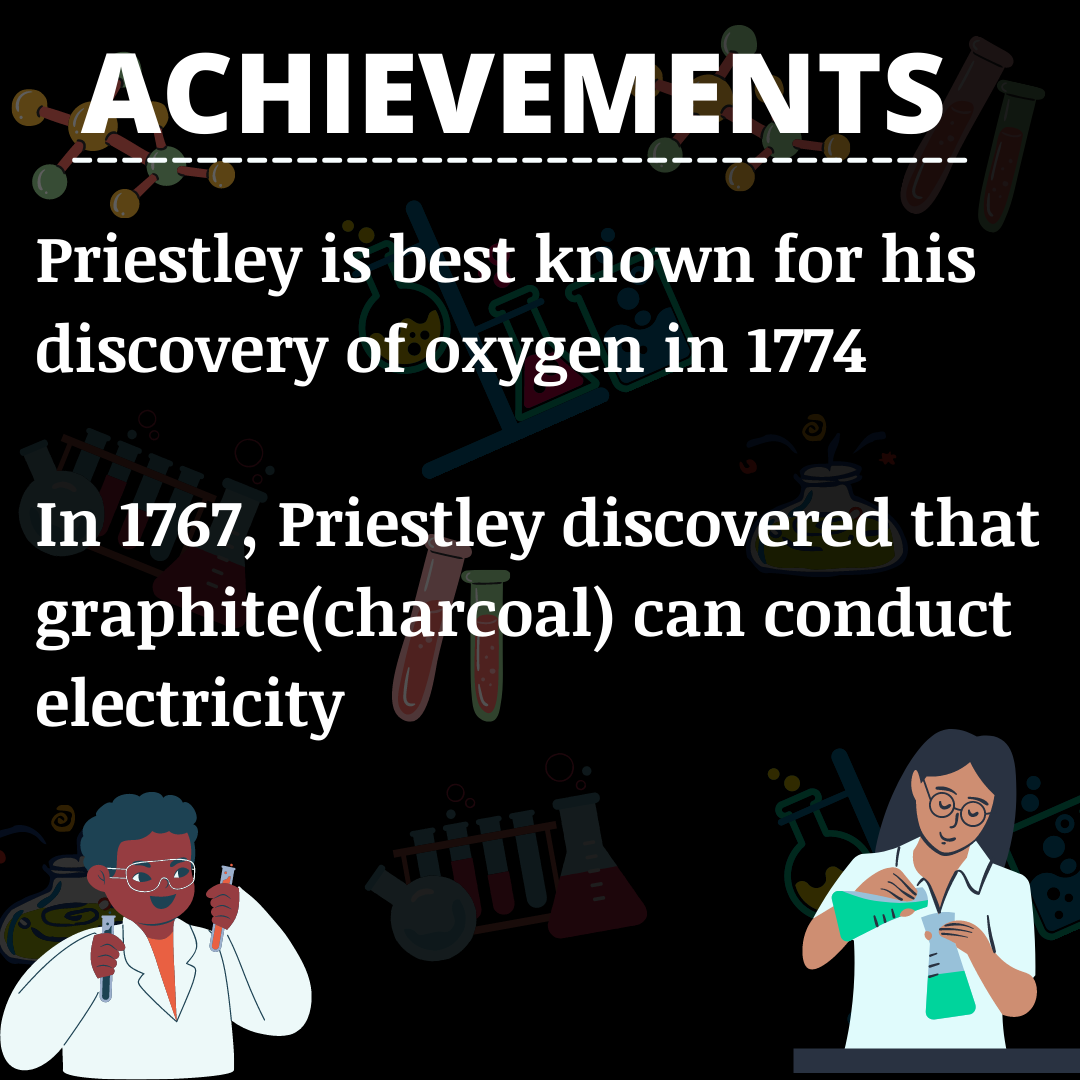
The Discovery of Oxygen And The Chemical Revolution:-
- The world recalls Priestley best as the man who discovered oxygen, the active ingredient in our planet's atmosphere. When Joseph Priestley discovered oxygen in 1774, he answered age-old questions of why and how things burn.
- In a series of experiments culminating in 1774, Priestley found that "air is not an elementary substance, but a composition," or mixture, of gases.
- Among them was the colourless and highly reactive gas he called "dephlogisticated air," to which the great French chemist Antoine Lavoisier would soon give the name "oxygen." He wrote that air "is a simple elementary substance, indestructible and unalterable."
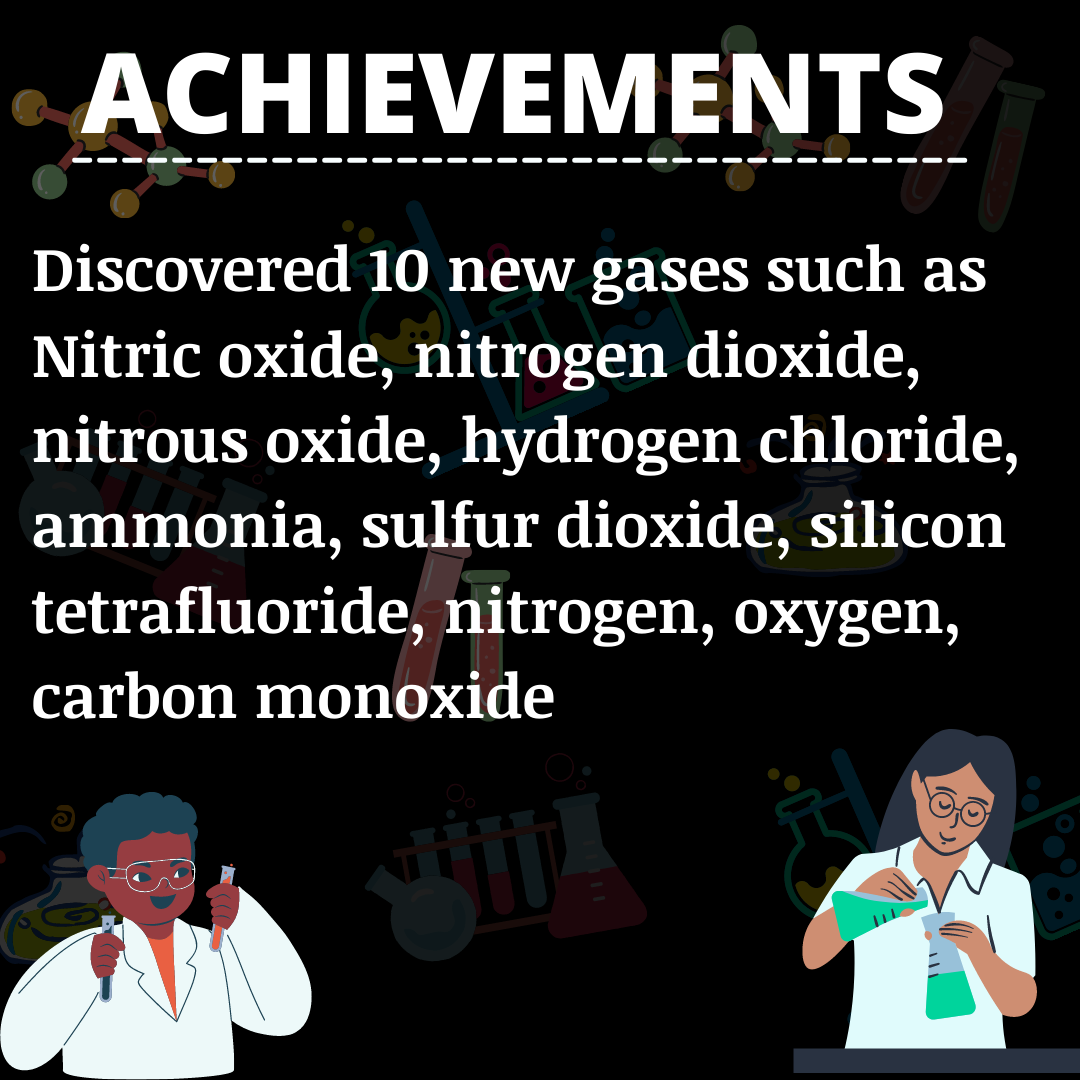
Priestley discovered several new gases:-Before him, scientists thought that the air on Earth consisted of carbon dioxide and hydrogen. Priestley brought 10 more gases to this list, such as Nitric oxide, nitrogen dioxide, nitrous oxide (laughing gas), hydrogen chloride, ammonia, sulfur dioxide, silicon tetrafluoride, nitrogen, oxygen, carbon monoxide.
Bubbling Beverages or Soda Water:-In 1767, Priestley was offered a ministry in Leeds, England, located near a brewery. This abundant and convenient source of "fixed air” — what we now know as carbon dioxide — from fermentation sparked his lifetime investigation into the chemistry of gases.
He found a way to produce artificially what occurred naturally in beer and champagne: water containing the effervescence of carbon dioxide. The method earned the Royal Society's coveted Copley Prize and was the precursor of the modern soft-drink industry.
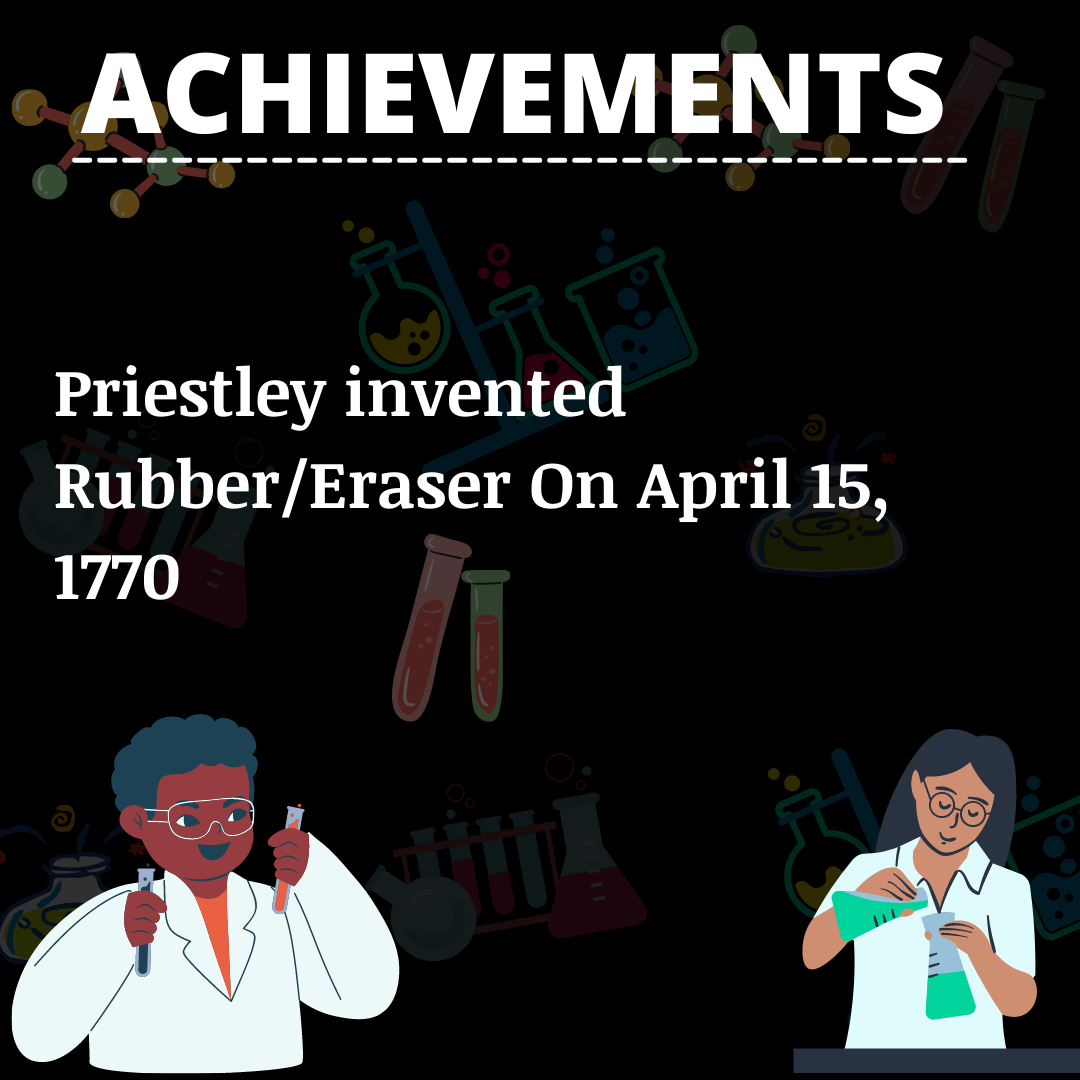
Work in Electricity:-In 1767, Priestley made his first major discovery-he discovered that graphite(charcoal) can conduct electricity. Now Carbon is the main ingredient in modern electrical resistors. On the basis of these experiments, in 1766 he was elected a member of the Royal Society of London.
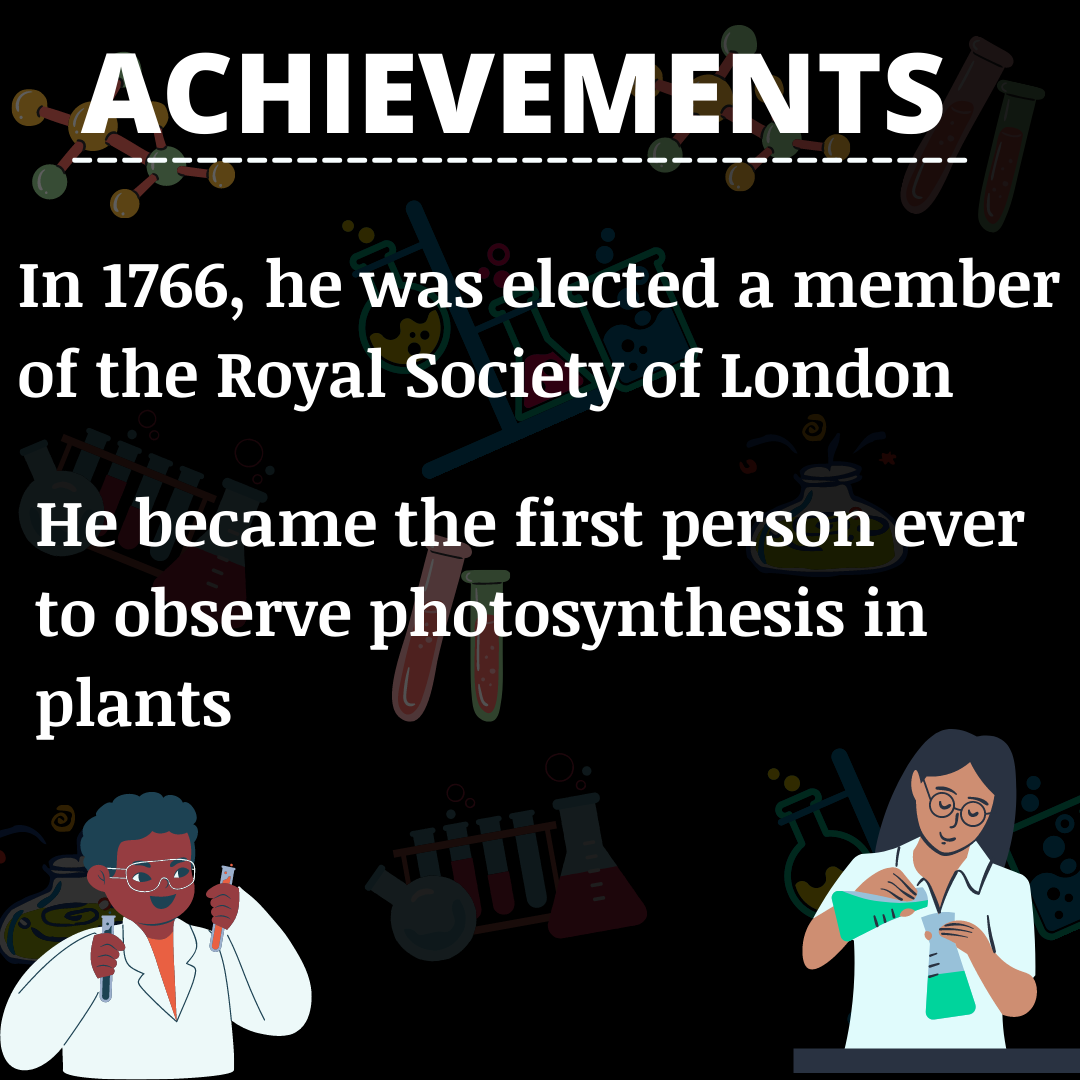
Photosynthesis:- Priestley became the first person ever to observe photosynthesis in plants, he discovered that plant could absorb carbon dioxide and release oxygen.
Eraser/Rubber:-On April 15, 1770, Joseph Priestley described that vegetable gum was able to remove black lead pencil marks. He called this substance “rubber.”
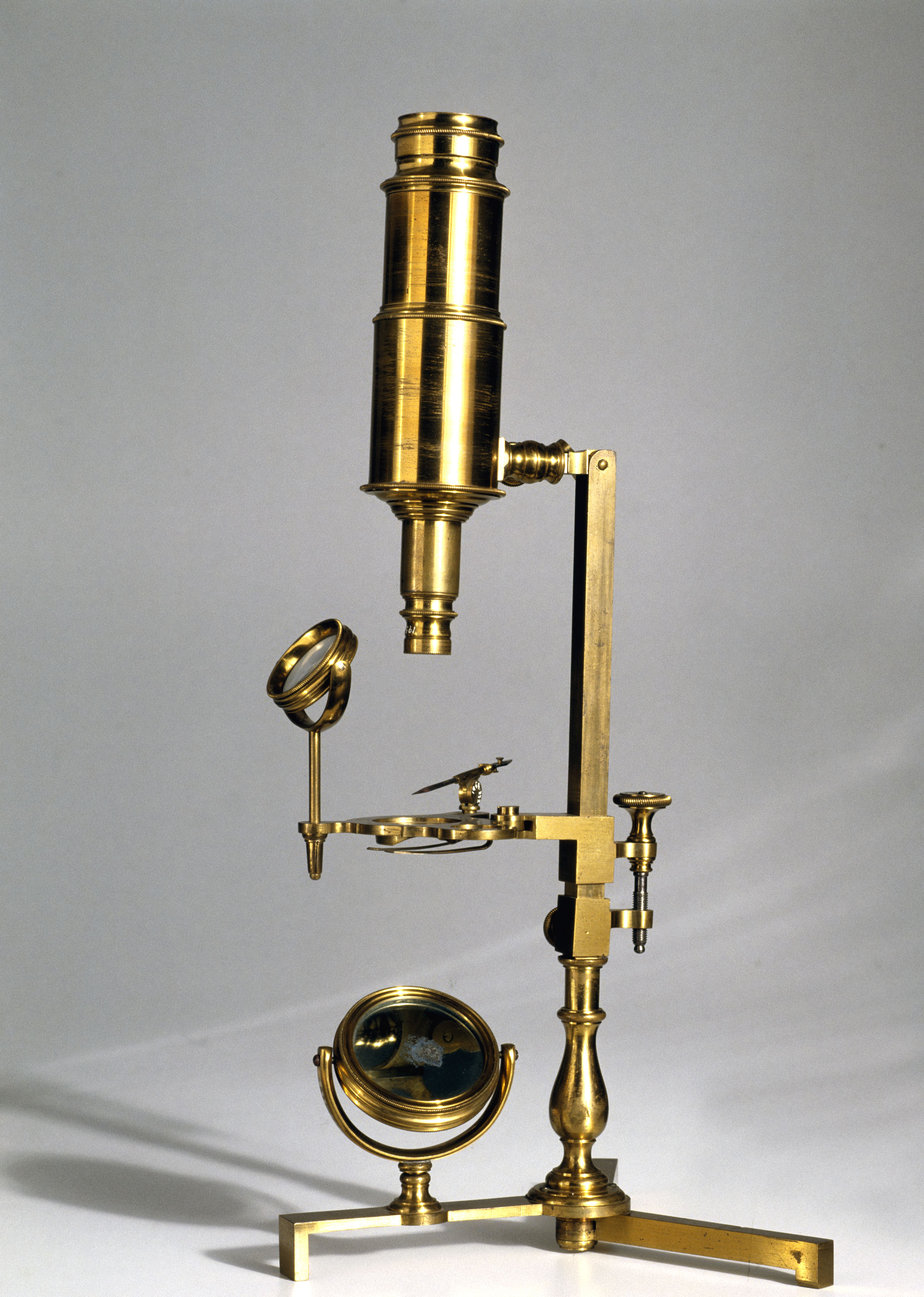
Landmark Designation and Acknowledgments
- The American Chemical Society dedicated the Joseph Priestley House to a National Historic Chemical Landmark on August 1, 1994.
- The American Chemical Society and the Royal Society of Chemistry dedicated the Discovery of Oxygen by Joseph Priestley an International Historic Chemical Landmark on August 7, 2000, in Wiltshire, UK.
- Adapted for the internet from “The Joseph Priestley House,” produced by the National Historic Chemical Landmarks program of the American Chemical Society in 1994.
- “Bowood House,” produced by the National Historic Chemical Landmarks program of the American Chemical Society and the Royal Society of Chemistry in 2000.
Joseph Priestley fled to the United States in 1794. He died in Northumberland, Pennsylvania on Feb 6, 1804, aged 70. Just three days before his death on Feb 03, he had started a new experiment. He was buried at Riverview Cemetery in Northumberland, Pennsylvania.
Also Read: Remembering Albert Einstein on his birth anniversary



